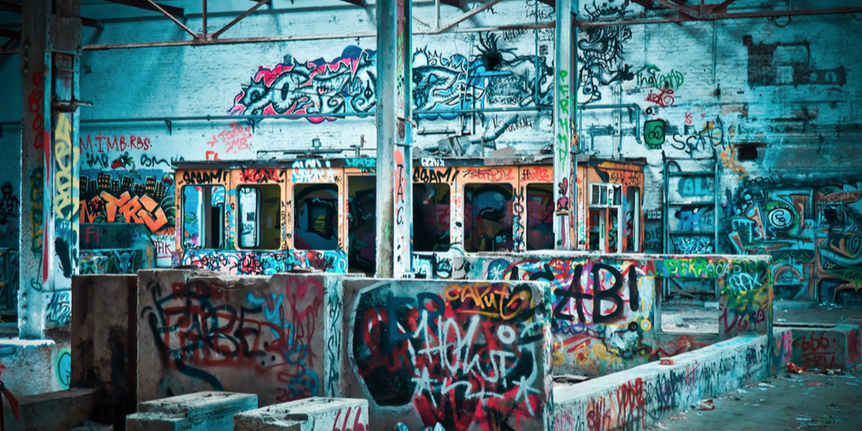Are we in the middle of a retail apocalypse?
By Jim Teece

Retailers have closed a record 102 million square feet of store space in 2017, then smashed that record in 2018 by closing another 155 million square feet, according to estimates by the commercial real-estate firm CoStar Group.
Then they started 2019 by announcing more than 8,600 store closures.
Look at this list of just some of stores closing or closed in 2019.
Payless Shoe Source : 2,500 Stores
Gymboree : 805 Stores
Dress Barn : 650 Stores
Charlotte Russe: 520 Stores
Fred’s:520 Stores
Family Dollar: 390 Stores
Shopko: 371 stores
Chico’s : 250 Stores
Gap: 230 Stores
Walgreens: 200 Stores
Forever 21: 178 Stores
Kitchen Collection: 160 Stores
Sears: 124 Stores
Kmart: 115 Stores
Bed Bath and Beyond: 60 Stores
Pier 1 Imports: 57 Stores
Victoria Secret: 53 Stores
Office Depot and Office Max : 50 Stores
CVS Health : 46 Stores
Abercrombie & Fitch: 40 stores
Lowe’s: 20 stores
Z Gallerie: 17 stores
Walmart: 17 stores
Barneys: 15 stores
Macy’s: 9 stores
J.Crew: 7 stores
Kohl’s: 4 stores
Nordstrom: 3 stores
Wow, that’s an insane list and it’s hard to get a handle on the impact and future of retail.
What’s causing this?
Is everyone ordering from Amazon and driving brick and mortar stores out of business?
In June 2018, SeekingAlpha reported that 90% of purchases were still made in physical stores. 90%!
They also noted that the top ten retailers (Walmart, Kroger, Costco, Home Depot, CVS, Walgreens, Amazon.com, Target, Lowe’s and Albertsons) are mostly brick-and-mortar operations. So it can’t be all Amazon’s fault, can it?
Retail is an industry in transition, rather than collapse.
Since at least 2010, various economic factors have resulted in the closing of many North American stores, particularly in the department store industry.
For example, Sears Holdings had more than 3,500 stores and 355,000 employees in 2006. In October 2018, Sears filed for bankruptcy and announced they would close an additional 142 of their 687 stores. At the time of filing, Sears was down to 68,000 employees.
The retail apocalypse has also had a domino effect on suppliers; Hasbro, for example, cited the loss of the Toys R Us chain as a major cause for lost revenue and layoffs the company imposed in October 2018.
There are many factors causing the retail apocalypse and no one thing can be to blame.
As e-Commerce grows, and malls empty, the consumer spending habits have shifted from buying clothes to buying experiences. Restaurant sales have increased as consumers shifted to eating out and travel instead of shopping for stuff.
Between 1970 and 2015 malls grew faster than twice the rate of the population. It’s not that people don’t shop in malls anymore, it’s that we have too many malls.
Mall visits also dropped 50% between 2010 and 2013.
As consumers moved to new neighborhoods of new homes, because they didn’t want to fix up an old home, entire strip mall infrastructures were built to support the moving in population. The homogenization of neighborhoods was driven by the demand of the consumer. They would judge a new community based on the accessibility to chain brick and mortar stores. The problem is, that it over saturated the market and now we are feeling the collapse of all that growth. Instead of building new versions of the store which was smaller, and sustainable, they built cookie cutter versions of the same old thing. The branches of growth simply could not support the weight that was thrown at them.
The final factor is bad management.
Sometimes it’s the government that helps shut down a chain of stores. In Ashland we used to have a Safeway and an Albertsons. When the two companies merged, Safeway was forced to abandon its aging downtown store due to anti-trust laws. Haggen took over the prime location Safeway Store only to go out of business a year or so later due to failed over-expansion and Albertsons was able to take over Haggen after driving their competitor out of business, in a bizarre move of chess pieces.
Amazon and Walmart have both offered guidance, warning about potentially soft online holiday sales in 2019.
What do you think about the retail reboot? Have we bottomed out yet?
Jim Teece owns Project A as well as Ashland Home Net, Rogue Broadband and is a partner in Art Authority and Co-Publisher of the Southern Oregon Business Journal. JimTeece.com


Advertisement